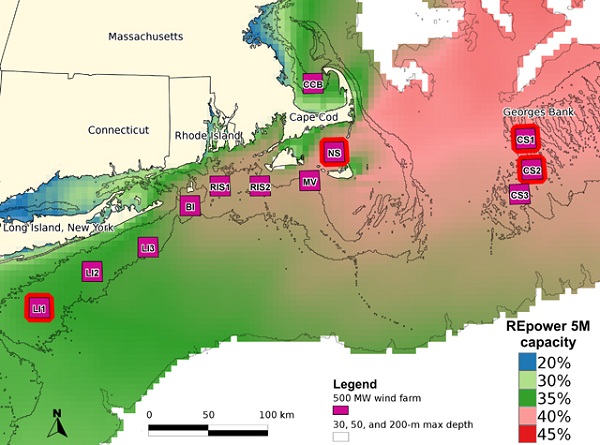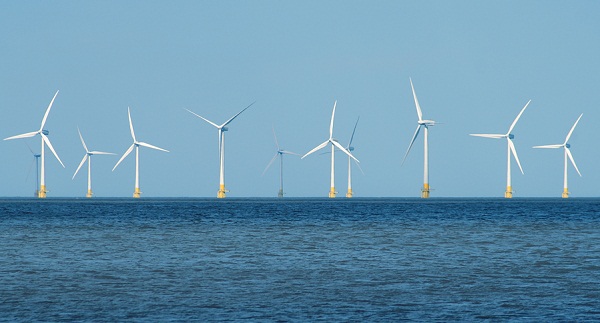The energy industry has long been wary of intermittent renewables that generate power only when the sun shines or the wind blows. But scientists in the renewable energy industry are increasingly using their deep knowledge of weather patterns to site wind turbines and solar panels and maximize power output.
A team of engineers at Stanford University recently published a study in Geophysical Research Letters that describes a complicated weather model that can determine optimal placement of wind farms. The team has already used the model to choose from 12 potential locations for the placement of four offshore wind farms in the Atlantic Ocean off the U.S. East Coast.

“It is the first time anyone has used high-resolution meteorological data to plan the placement of offshore wind grid,” senior author Mark Z. Jacobson, a professor of civil and environmental engineering, said in a statement. “And this sophistication has provided a deeper level of understanding to the grid plan.”
In the researchers scenario, four offshore wind farms were targeted for an area ranging from off Long Island, N.Y., up the Atlantic coast to the Georges Bank, 100 miles east of Cape Cod, Mass. Each site will comprise about 100 turbines and will be interconnected for a generating capacity of 2,000 megawatts (MW). By connecting the farms and placing them in locations that will optimize output, the engineers believe output will be more stable than single-site farms. The engineers also tried to match peak productivity with peak demand times, eliminating the need for significant energy storage or the possibility of excessive energy waste.
The researchers said that because the sites aren’t far offshore, tdaily temperature differences between land and sea are consistent, leading to similarly consistent sea breezes. They will also experience less frequent stormy weather. Meanwhile, the more stable output could make life easier for grid operators trying to balance generation and supply across the grid. And by connecting the farms, the engineers have cushioned the farms with another layer of consistency.
While the engineers were looking at weather patterns to make their placement decisions, they did have other considerations to take into account. For instance, the turbines need to be in water that is less than 50 meters deep but also relatively close to urban centers, like Boston and New York, that will use the power.
“The goal is to even out the peaks and valleys in production,” said Mike Dvorak, the lead author of the study and a recent Ph.D. graduate in civil and environmental engineering at Stanford. “In our model, expensive no-power events—moments when individual winds farms are producing zero electricity—were reduced by more than half from 9 percent to 4 percent by connecting the farms together.”

In their analysis, the scientists found that the interconnected model would have a capacity factor (the ratio of actual output to full-capacity output) of at least 48 percent. “Generally, with wind farms, anything over 35 percent average capacity is considered excellent,” Jacobson said.
Another perk of the proposed Georges Bank location is that it is far from residential view, unlike the controversial Cape Wind project, which is planned for Nantucket Sound within view from Martha’s Vineyard, Nantucket and Cape Cod.